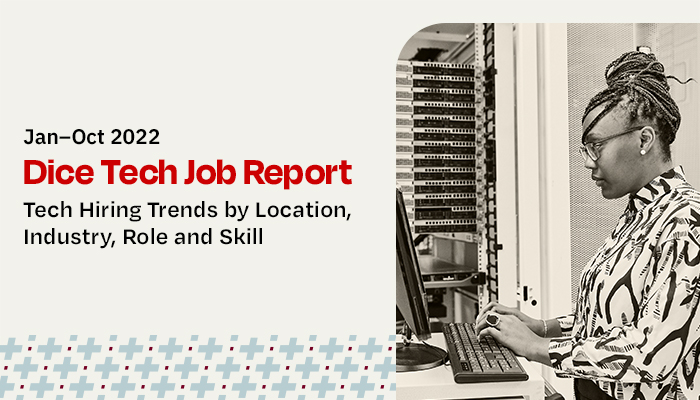
This article is the second of a two-part series on employer branding for large enterprises. The first article covers tailoring your values, mission and vision to attract technologists and evaluating your candidate and employee experiences for improvement opportunities. Read the first article here.
Beyond salary and benefits, technologists want to know what it’s really like to work for your organization. Your employer brand is the collection of interactions candidates and employees have with your brand throughout recruitment, hiring and employment—and how candidates gain an understanding of what it’s like to work for your organization.
In today’s competitive tech hiring market, employer brands are serving as a differentiator and helping organizations stand out from their competitors to win the limited supply of tech talent available. Using your established values, mission and vision, tailored for technologists’ wants and needs, this article will guide you through creating content that communicates your employer brand to field informed candidates and measuring the effectiveness of your employer brand communications.
Build Content to Support Recruitment (and Retention)
Communicating your employer brand—what it’s really like to work for your organization—is a critical step to attracting tech talent and creates informed candidates (making your job a little easier!). Creating assets and content you can add to your organization's website and social media pages is a great place to start because these are often the places candidates begin their research on your organization. Making sure you're regularly sharing relevant, helpful and up-to-date content on those channels is therefore critical to recruitment.
When thinking about creating content that supports your employer brand communications strategy, it’s important to remember you have two primary audiences in addition to your current employees (and their networks for potential referrals): active candidates and passive candidates.
Check out the Dice Tech Job Report for the latest data and trends in tech hiring.
Active candidates are those who, wherever they are in their career path, are actively looking to make a move. We have already established that they want to know the basic facts about your company as part of their research. By offering images, verbiage and short videos profiling the company and its team, you can provide a more interactive and engaging glimpse into the work (or WFH) environment. Don’t get too caught up in production value particulars—even a handheld smartphone video can convey an authentic atmosphere that candidates are seeking out.
Reaching out to passive candidates requires a more nuanced and personalized approach. They don’t need your job, so the best way to approach this group is with a simple, direct and professional message with a strong introduction. Smart content backed by in-depth research on the candidate will grab their attention, and while you may not convince them upon first outreach, leaving the door open for a relationship could pay dividends in the future. And it pays to be persistent. Many candidates will need to hear from you multiple times before they take action, so don’t give up if at first you don’t make a connection. Staying top of mind is also important for when candidates do become open to opportunities. Regular contact with helpful and relevant information about their function or industry will help recruiters stay top of mind with passive candidates in today’s competitive market.
Take the opportunity to develop content that can also be customized for current employees about perks and testimonials reminding them of company values. This is a smart way to support retention, an increasingly critical goal in today’s highly competitive tech job market. Overall, your content is creating informed candidates and employees so your employer brand is shared with consistency and authenticity to all audiences.
Measure Progress and Optimize for Improvement
You’ll also want to put a measurement plan in place to regularly monitor the effectiveness of your employer brand communications. Setting up core metrics and establishing benchmarks will help you and your organization understand and evaluate your progress. There’s a temptation in today’s data-driven world to measure everything, but simplicity is key here. Creating too much noise with excess data can distract you from what’s truly important to your organization. Here are some examples of core metrics you may want to add to your measurement plan:
- Percentage of jobs filled by employee referrals
- Percentage of your employees making at least one referral per quarter or year
- Percentage of jobs filled with internal hires
- Traffic to the careers page on your organization website (broken down by New Visitors, Returning Visitors, Session Times, etc.)
- Times to hire/start (Requisition Open Date to Start Date)
- Cost Per Hire (broken out by key department areas)
- Recruiter productivity
Once core metrics have been selected and you know how you’ll gather this data, collect and record relevant benchmarks. These can be industry-wide benchmarks, competitor benchmarks and even internal benchmarks. Benchmarks will help you understand how your organization is performing once you begin collecting data and quickly identify areas in need of optimization for improvement.
Keep in mind that it's important to not overreact if a metric jumps in a given period. A sudden spike or dip could simply indicate natural seasonal change. Pay attention to these sudden changes and if they persist, consider action. Otherwise, it’s best not to make an immediate sweeping change based on one data point.
Developing a communications strategy for your clearly defined mission, vision, and values as they relate to technologists working for your organization is a critical step to attracting and retaining tech talent. This strategy will have to be maintained, adapted and revised as things change—and will require company-wide outreach and input to ensure success. Having mechanisms in place for measurement and optimization also ensures you’ll know when and how to adjust your communications strategy.
If you’d like help communicating and measuring the effectiveness of an authentic brand that attracts and retains technologists, Dice is here for you. Dice offers solutions that provide support at all stages of employer branding for all types of organizations. Learn more about Dice Employer Brand Solutions or reach out to Dice’s Employer Branding consultant, Jesse Ofner, for a complimentary consultation on how to win tech talent in today’s competitive market by investing in your employer brand.



